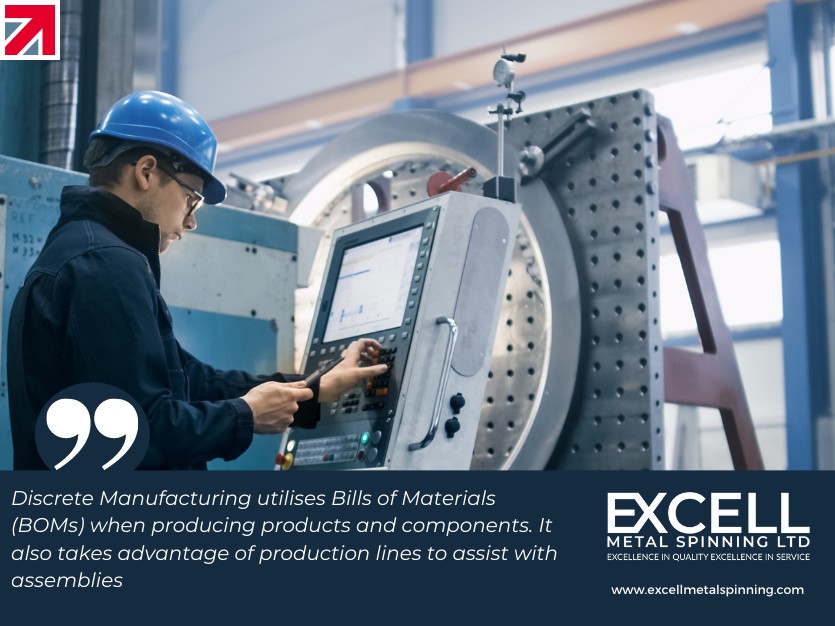You probably already know how integral manufacturing processes are to the success of your operational efforts and subsequent customer relationships. Which is why it is exceptionally important to easily identifying manufacturing processes and what they involve. And In doing so, giving you and your company a better idea of what you will need for your production lines.
Without a blog, you will find yourself experiencing a number of problems such as downtimes, lack of understanding on what process work best for what type of organisation, and in worst case scenarios, damaged customer relationships because the wrong process were enforced. And to improve your supply chains, it’s best to grasp a better understanding of the different types of manufacturing processes.
This blog will cover Discrete manufacturing, in which we will guide you through what it is and distinguish its differences between process manufacturing (which it is commonly confused with).
What is Discrete Manufacturing?
Discrete Manufacturing is the production of specific items that are easily distinguishable and doesn’t follow sequential steps or formulas. Often, manufacturers will focus on the production of individual components that may come together to form the final product.
What does Discrete Manufacturing involve?
The Discrete Manufacturing Process has several characteristics that can be easily identified in the production of distinct products and components. These include (but not limited to):
- The use of production lines to manufacture products or components, similar to the Repetitive Manufacturing Process
- The heavy influence on the design of the product or component which can be highly disparate
- The setup and tear-down frequencies altering the time of the production process (This is once again influenced by how different the products or components being manufactured are)
- The production of units can be low in volume with high complexity, or High in volume with low complexity. This can alter the needs of the company and its customers regarding quality, time-to-market speed and costs
- The production capacity is difficult, if not impossible, to calculate in discrete manufacturing due to the variation in production time and machine setups
As you begin homing in on your manufacturing process knowledge, you will eventually come across various terms such as process manufacturing. The easiest way to differentiate processes like Repetitive and Discrete from process manufacturing, is that the latter use gases, liquids, powders and slurries in production.
Read about The six types of manufacturing process to see how they compare with one another. In case you come across a manufacturer who wants to compare discrete manufacturing against Process manufacturing – or you’re searching the answer for yourself – let’s explore the differences. Then we’ll take a look at some examples.
The difference between discrete and process manufacturing
There are underlying differences that manufacturers can identify to differentiate Discrete manufacturing processes from Process manufacturing.
Process Manufacturing
Process Manufacturing utilises formulas or recipes when producing products. As previously mentioned, Process manufacturing utilises liquids, gases, powders and slurries as its raw materials. It also:
- Requires sophisticated tracking when producing with Batch or Continuous operations. Scheduling mechanisms are also required to keep operations running efficiently
- Requires a set of processes to be finished with each individual process requiring a set of needs. It is recommended that each process is performed separately to achieve better control and easier maintenance of the overall production
- Builds final products that cannot be taken apart, more specifically, you cannot take out the ingredients from the finished product. This is how Process manufacturing is considered formula based
- Hard to distinguish between products i.e. liquid
- Distinguished by a production approach with minimal interruptions with the processing of production runs
Discrete Manufacturing
Discrete Manufacturing utilises Bills of Materials (BOMs) when producing products and components. It also takes advantage of production lines to assist with assemblies. It is also:
- Manufactured-to-stock, made-to-order or assembled to order
- Manufacturing final products in sequential steps made in the same process or by the same craftsman and produces products exact by assembling components together
- Changed frequently from order to order and this is based on production orders
- Producing finished goods that may include screw, nuts and bolts
- Standard parts and components driven
- Distinguished by the production of distinct items that use BOM and routing to determine costs and lead times
Ready to Manufacture?
Identifying manufacturing processes is important and can help you efficiently manage the resources and energy efficiently. It will set the foundations for your manufacturing procedures and ensure that a level of traceability is created in addition to identifying the best possible way to effectively meet customer demand. Read the full guide above to identify if discrete manufacturing is the right process for your organisation!
Find out more about Excell Metal Spinning Ltd on their member profile page here
Find out more about Excell Metal Spinning Ltd on their member profile page here
Member-created content 5 years ago | From members


